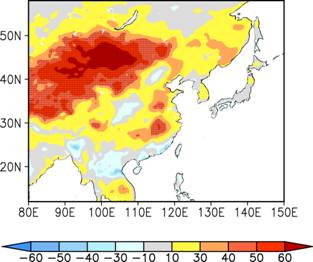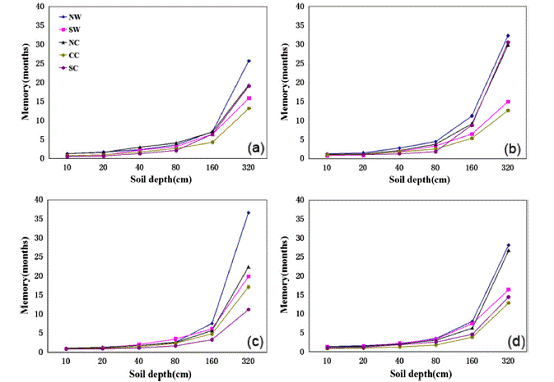Soil Temperature Affects Summer Surface Air Temperature Variability
Date:2015-09-14
Seasonal climate anomalies and extremes often result in severe social, economic, and ecological consequences. Currently, seasonal climate prediction skills are largely limited by our poor understanding of slowly varying ocean and land processes, and their interactions with the climate. Compared with ocean-climate interactions, much less attention has been paid to land-climate interactions.
Dr. Lingyun Wu and Prof. Jingyong Zhang from the Institute of Atmospheric Physics, Chinese Academy of Science (IAP/CAS) used two long-term WRF regional climate model simulations to show that soil temperature-atmosphere coupling depends on climate regimes, mainly affecting summer surface air temperature variability over the arid/semi-arid regions of East Asia. Over these areas, subsurface soil temperature feedbacks play an important role in amplifying summer surface air temperature variability, contributing to about 30%-70% of total variance.

Figure 1. Percentage of interannual summer surface air temperature variance due to subsurface soil temperature feedbacks. Grid cells with values significant at the 90% level by F-test are marked by the solid circles.
A further study by Mr. Kai Yang and Prof. Jingyong Zhang demonstrated that the soil temperature memory estimated by the red noise method differs spatially and varies with soil depth and season. The averaged soil temperature memory length is about 1 month at 10-20cm, and can reach up to 1 year or more at 320cm. Spring soil temperature is found to be significantly correlated with summer surface air temperature in northwestern China. Soil temperature could be a potential predictor for summer surface air temperature in northwestern China.

Figure 2. Mean soil temperature memory (months) over five regions of China as a function of soil depth (cm) in (a) spring, (b) summer, (c) autumn, and (d) winter
Citation:
1. Wu, L., and J. Zhang, 2014: Strong subsurface soil temperature feedbacks on summer climate variability over the arid/semi-arid regions of East Asia. Atmospheric Science Letters, 15, doi:10.1002/asl2.504. http://onlinelibrary.wiley.com/doi/10.1002/asl2.504/pdf
2. Yang, K., and J. Zhang, 2015: Spatiotemporal characteristics of soil temperature memory in China from observation. Theor. Appl. Climatol., doi: 10.1007/s00704-015-1613-9.
http://link.springer.com/article/10.1007/s00704-015-1613-9/fulltext.html
Contact:
Dr. WU Lingyun, wuly@lasg.iap.ac.cn
